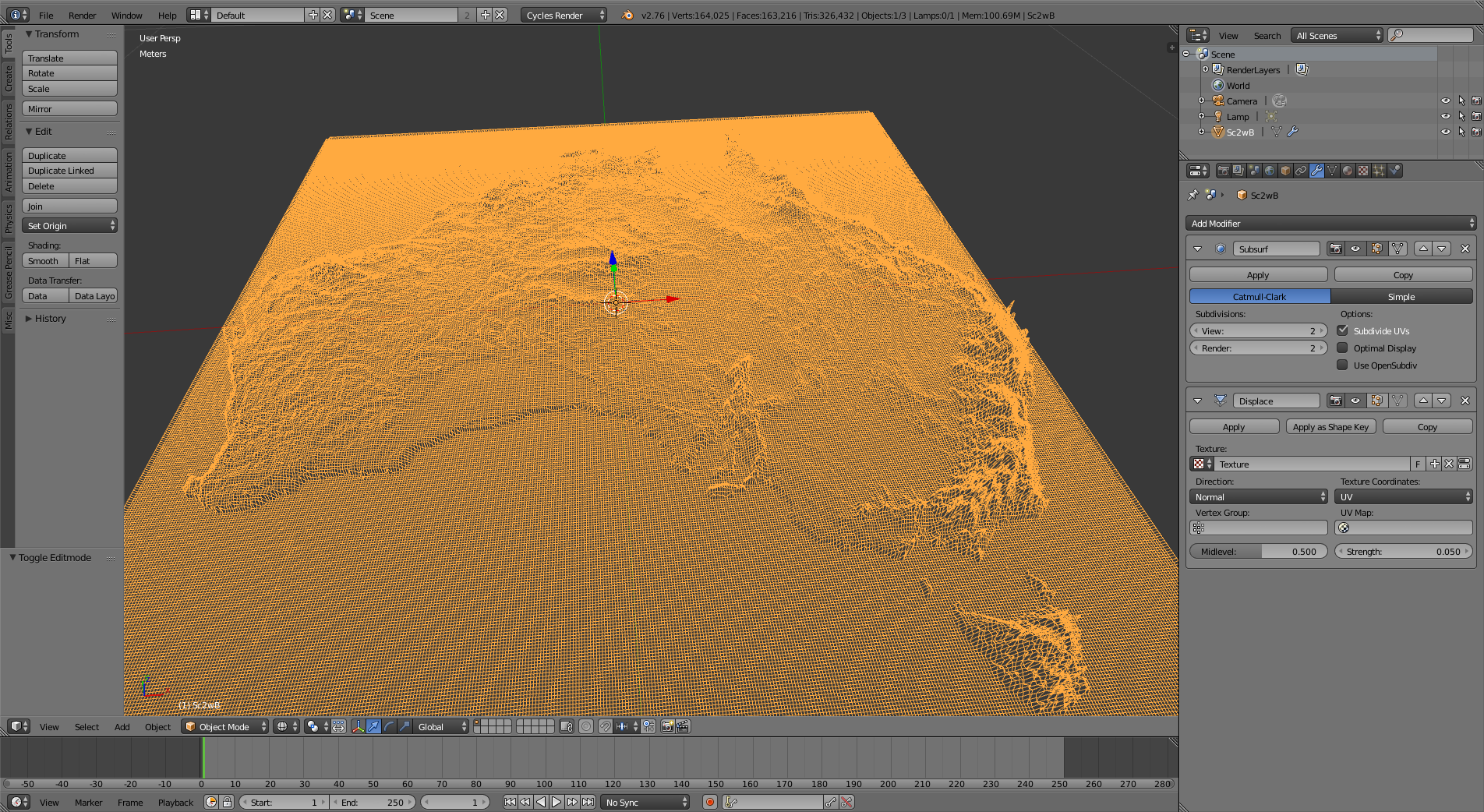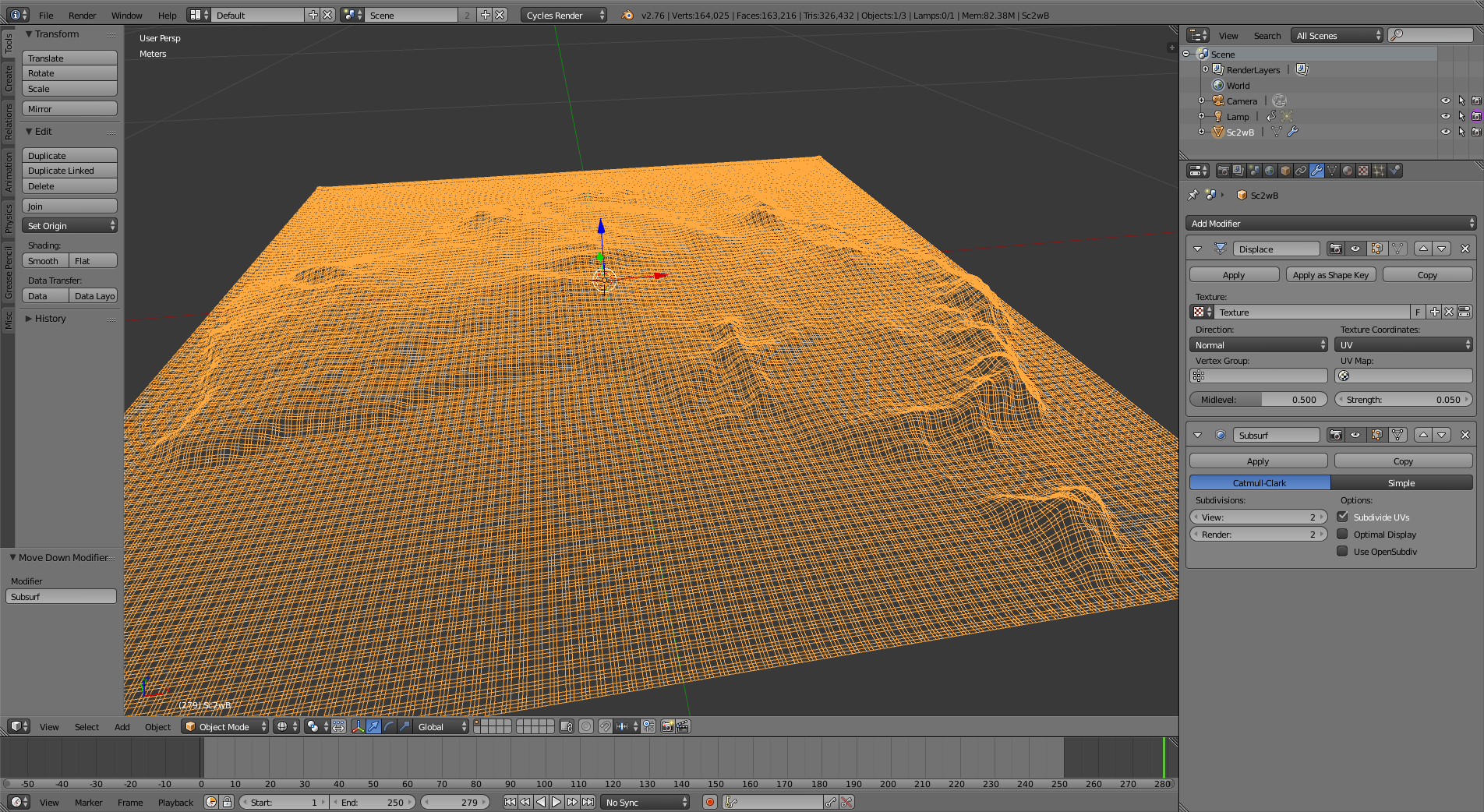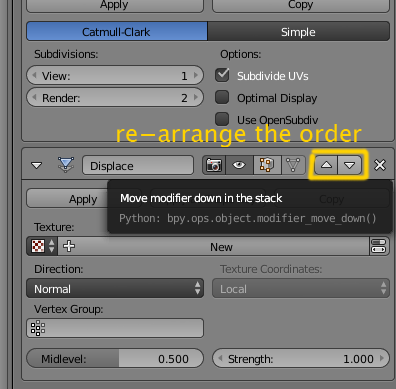Using a subsurf (subdivision surface) modifier before the displacement will give you a lot of flexibility.
Here's a simple plane (imported with the images as planes plugin) subdivided 100 times in edit mode, and then with a subsurf modifier added to it...
 (Click on the images to enlarge)
(Click on the images to enlarge)
The main advantage of the modifier is that you can determine different levels of subdivision for the 3D viewport and for the final render, so you can keep a decent level of detail for the final render, while having a responsive interface...
The order of the modifiers is important here because you want to subdivide first and displace later, otherwise you'll have a much smoother map but with less detail, like illustrated here:
To change the order of the modifier stack, use the triangles on the right side of the modifier's window:
A happy medium is using a subsurf before displace modifier and then one after:
But be extremely careful!: by doing that you are making an exponentially large number of vertices.
For example: If you set the first modifier with a subdivision level 2, it will create 25 vertices out a single quad. Further subdividing those 25 quads with other subsurf modifiers can very quickly take you to a number your computer will not be able to manage, and might even make it crash...
Please read this performance considerations: http://blender.stackexchange.com/a/15667/1853https://blender.stackexchange.com/a/15667/1853
To get to very detailed but efficient mesh, you can get to the level of detail you want with the subsurf modifiers, apply them (use the apply button on the modifier), and then use a decimate modifier to make the number of vertices more manageable while keeping the shape.





